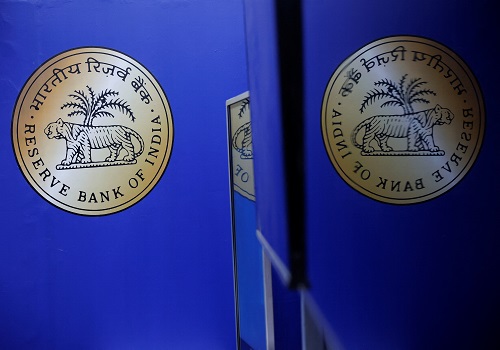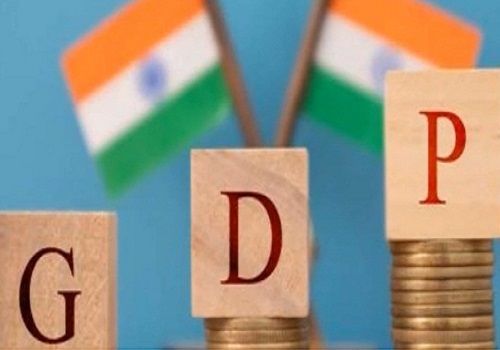Monthly Trade Update : Deficit narrows; Q2 CAD/GDP tracking a healthy 1.1% By Emkay Global Financial

The Sep-23 trade deficit (USD19.4bn) was driven by imports falling more than exports, while downward revisions for July and August mean that H1FY24 deficit is ~18% lower than last year. Oil imports fell sharply, reflecting lower volume, as did gold imports, while core imports for H1FY24 decreased due to weak domestic demand. Services surplus increased on the back of healthy software exports. Q2FY24 CAD/GDP is tracking 1.1%, akin to Q1. The lower deficit numbers provide downside risk to FY24E CAD/GDP of 1.4%.
Merchandise trade deficit
Merchandise trade deficit decreased to USD19.4bn in Sep-23 vs. the downward-revised Aug-23 deficit of USD21.7bn, with imports (USD53.8bn, -10.5% MoM) marginally declining more than exports (USD34.5bn, -10.4% MoM) on a sequential basis. Also, growth remained negative on YoY basis for both (exports: -2.6%, imports: -15.0%). August and July deficits have been revised down by ~10%, leading to Q2FY24 deficit coming in at USD59.6bn vs USD56.3bn in Q1FY24. Thus, for H1FY24, exports clocked-in USD211.4bn (-8.8% vs H1FY23), while imports stood at USD327.2bn (-12.2% vs H1FY23). The H1FY24 deficit of USD115.9bn is, hence, 17.7% lower than that in H1FY23.
Merchandise trade deficit grows as imports rise more than exports
Oil exports increased 10.3% MoM (-10.6% YoY) on the back of higher crude oil prices during the month. Non-oil non-gold (core) exports fell though, by 17.3% MoM (1.9% YoY), reflecting a slowdown in global demand. Among the top-five export categories, gems & jewelry (22.5% MoM, 9.0% YoY) and drugs & pharma (6.8% MoM, 9.0% YoY) saw positive sequential growth. For H1FY24, core exports were marginally higher than last year’s (USD160.8bn, 0.3% YoY), while oil exports stand significantly lower (USD35.0bn, -31.2% YoY). The fall in imports was driven by both lower oil and core imports. Oil imports declined 8.5% MoM (-20.3% YoY), despite the Indian basket averaging at USD94/bl during the month (8.2% MoM increase). This implies a sharp fall in import volumes, possibly on account of refinery maintenance during the month. Gold imports declined (-16.8% MoM, 9.8% YoY) to USD4.1bn for the month — this is likely a breather after the heavy imports in August ahead of the festive season. Core imports fell 8.3% MoM (-5.0% YoY), while coming in 8.3% lower for H1FY24, reflecting weak domestic demand. Oil imports in H1FY24 were 21% lower than in H1FY23 (USD83.8bn), while gold imports rose 9.8% (USD22.3bn), largely on higher gold prices.
Services trade surplus sees a marginal increase
Services trade remained in surplus, recording an uptick on sequential basis. Services trade surplus for Sep-23 was USD14.5bn vs. USD13.6bn in Aug-23, with exports (USD29.4bn) increasing 2.3% and imports (USD14.9bn) falling 1.3%. On YoY basis, services exports rose 0.5%, while imports decreased 8.4%. For H1FY24, services exports have grown ~6%, while imports have declined ~1%, leading to the services trade surplus increasing ~16% to USD75.7bn. Software exports have been aided by resilient growth in USA so far, but potential weak external demand ahead could weigh on services exports in H2FY24.
We maintain our FY24E CAD/GDP at 1.4%
This month’s lower-than-expected trade deficit, along with downward revisions for July and August, has meant that the CAD/GDP for Q2 is likely to log at 1.1%, similar to Q1, and much lower than the earlier estimate. This trend points to some downside risks now to our FY24E CAD/GDP of 1.4%, even after assuming some widening in the deficit in Q3FY24. Weak external demand and potentially-higher crude oil prices provide upside risks to our forecast.
For More Emkay Global Financial Services Ltd Disclaimer http://www.emkayglobal.com/Uploads/disclaimer.pdf &
SEBI Registration number is INH000000354










More News

Top Conviction Ideas: Metals & Mining by Axis Securities Ltd













